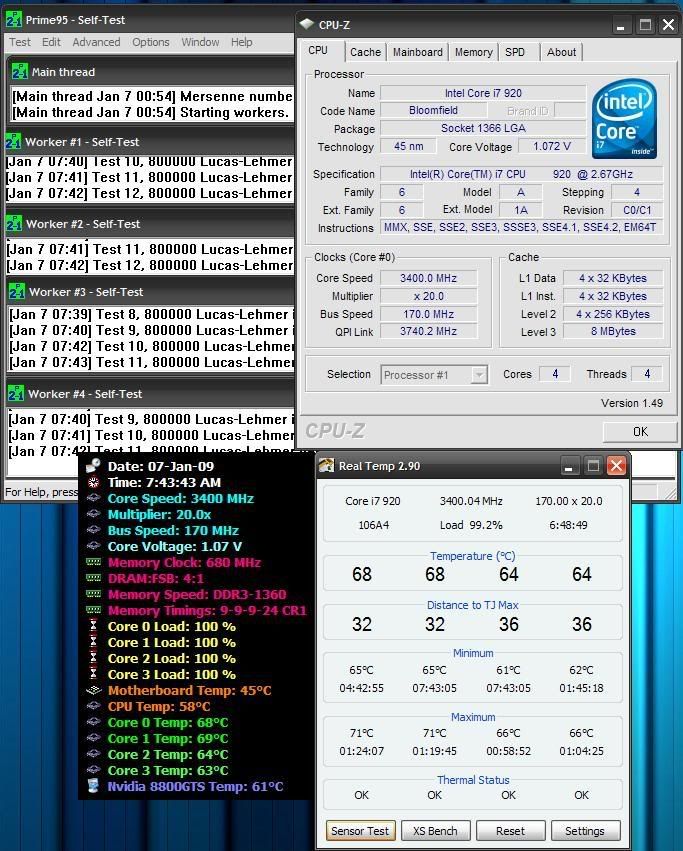Turbo mode and overlocking
The Turbo mode of the Core i7 is not an architectural characteristic but a functionality that Intel has already implemented on certain versions of the Core 2 Mobile under the name IDA (Intel Dynamic Acceleration). This mechanism consists of accelerating in a dynamic and temporary way the clock speed of one or several of the cores when others are not called for. The concept is based on the fact that many applications consist of one or two threads and therefore do not use all of the multi-thread processing potential of a multi-core processor. When the case arises, the Turbo mode comes into play (under control of the operating system) and increases the multiplying coefficient of the one or several cores in question.
Thus, Nehalem is an evolutionary step in the control of internal voltage and clock frequency. Up until now this control was handled by the operating system and the processeur offered the possibility of external control of the multiplying coefficient (FID: Frequency Identifier) and voltage (VID: Voltage Identifier) which forms the foundation for EIST (Enhanced Intel SpeedStep Technology). With the Core i7, these parameters are no longer external and it alone can change them in order to have control over its thermal dissipation. Indeed, the processor is capable of estimating the power it consumes at each moment (voltage x intensity of the current consumed) and of course to control it with the help of frequency and voltage parameters. Therefore, a Core i7 model will no longer be characterized by its maximum FID and VID but by its maximum TDP. Software (the BIOS and operating system) no longer controls the FID/VID combo as it did with previous generations but rather « Power-States » (or P-State). These power levels are defined based on the overall TDP of the processor at the maximum frequency outside of Turbo mode.
As an example, the Core i7 has an announced TDP of 130 Watts at 2.93 GHz, or 22 x 133. For each intermediate multiplying coefficient, the estimated TDP equals:
TDP[coeff] = (coeff / max_coeff)3 x TDP_core + TDP_uncore
The “uncore” part of the processor (IMC and L3 cache) is not subject to P-states and thus 20 of the 130 Watts is constant. We therefore obtain for example at 14 x 133 = 1.86 GHz:
TDP[14] = (14/22)3 x 110 + 20 = 48 Watts.
The multiplying coefficient varies between 12x and 22x which gives us ten P-states between 37 and 130 Watts.
The Turbo mode thus operates within the framework of this internal control of the processor’s overall TDP. The absence of activity of one or several cores results in a lowering of the overall TDP and thereby offers the Turbo mode the opportunity to accelerate cores that are called for.
With this new protection mechanism via control of the TDP, there is the obvious question of overclocking as the processor’s maximum TDP is quickly surpassed. A priori, Intel will finally not set any limitations here and it will be possible to go beyond this value, but of course the Turbo mode will not be in effect.
Only variations of Core i7 “Extreme Edition” models will enable modifying the TDP ceiling. However, note that these modifiable parameters on the Core i7 XE will only concern the Turbo mode. Should the need arise, it will thus be possible to modify the maximum multiplying coefficient as well as the TDP but this will not mean that the processor will function the entire time under these parameters.






 Reply With Quote
Reply With Quote




 .
. .
.





 :
:










Bookmarks